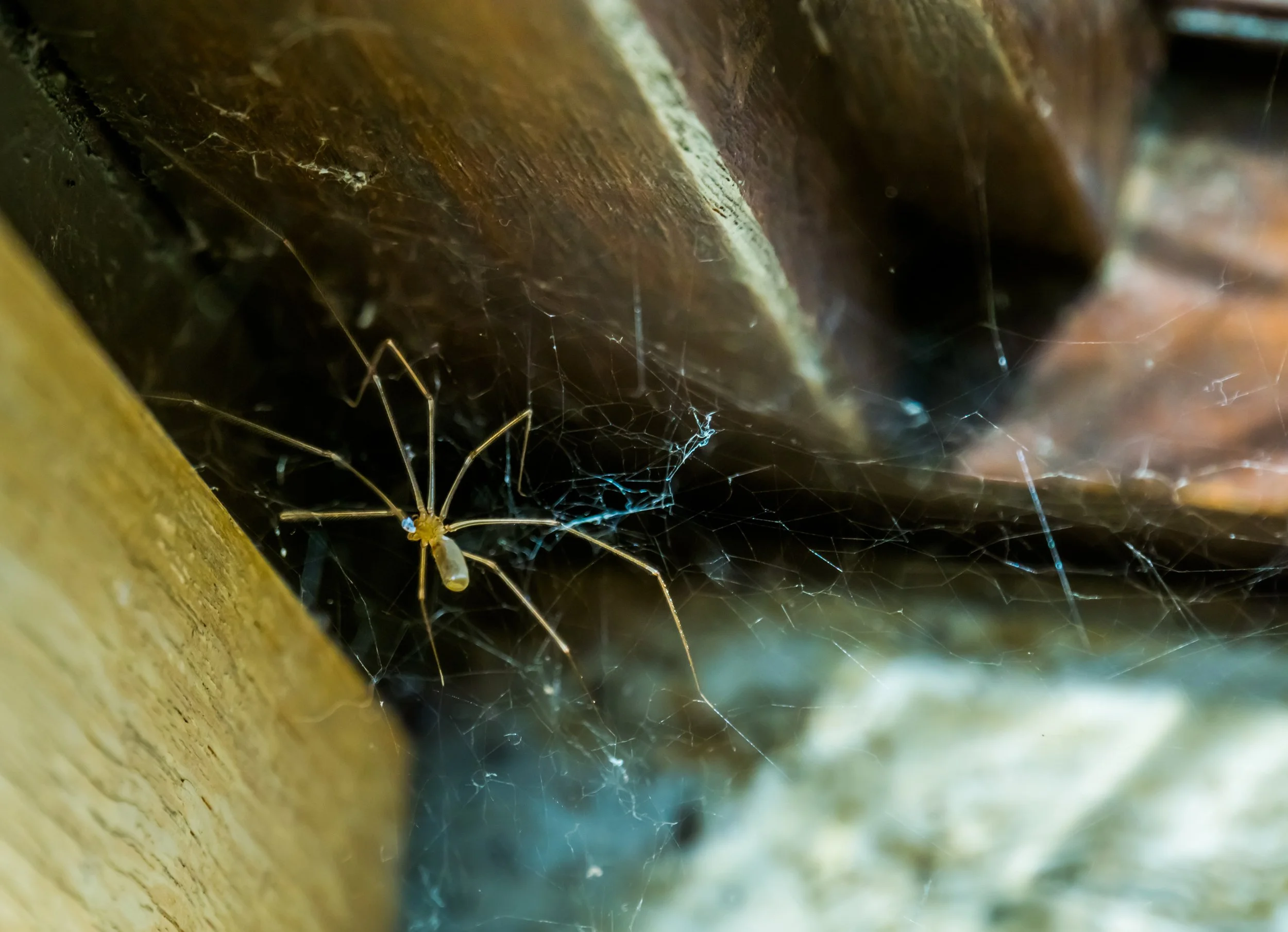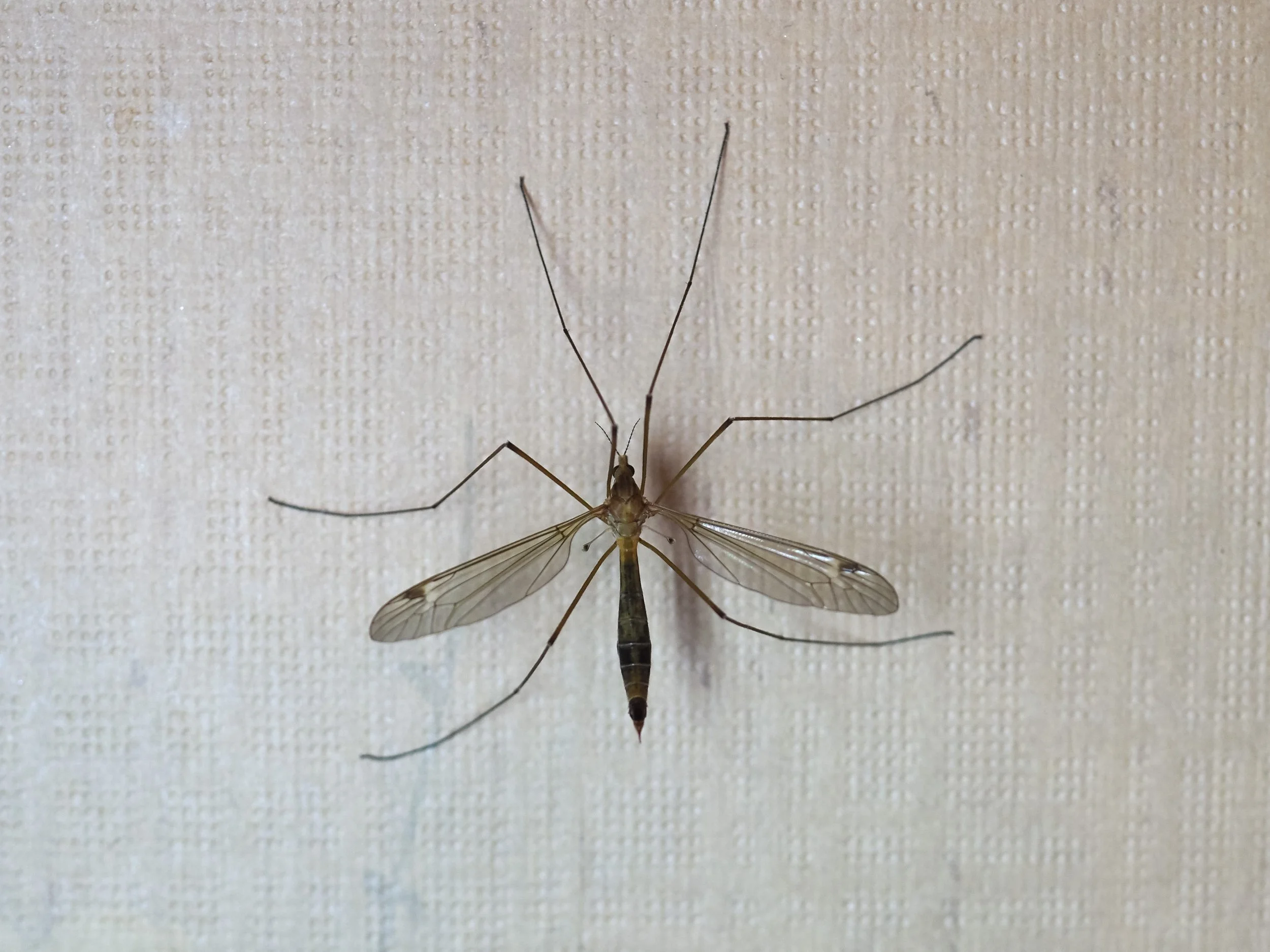Are Daddy Longlegs Spiders? Understanding This Common Creature
When San Gabriel Valley residents find those long-legged creatures hanging out in their Pasadena garages or creeping through their Arcadia basements, the age-old question emerges: are daddy longlegs spiders?
Chances are, these creatures aren't what they seem. While most Americans believe that daddy longlegs are, in fact, spiders, the truth is far more fascinating and complex, and will likely change how you look at these misunderstood species forever.
What Exactly Are Daddy Longlegs? Introducing the Cellar Spider
When most San Gabriel Valley homeowners ask "are daddy longlegs spiders?" they're actually talking about several different creatures that share the same nickname. The gangly visitors you spot in your Monrovia crawl spaces or San Marino corners could be one of three completely different animals:
Harvestmen
True daddy longlegs (technically called harvestmen) belong to the order Opiliones and aren't spiders at all. These creatures have been roaming Earth for over 400 million years, long before actual spiders evolved. They have one body segment instead of two, can't produce silk, and lack venom entirely.
Cellar Spiders
Cellar spiders, however, are the real web-weavers you'll find in your home's quiet corners. These genuine arachnids do belong to the spider family and create those messy, irregular webs in places like:
Basement corners and crawl spaces
Garage ceiling joints
Under stairwells and porches
Dark closets and storage areas
Crane Fly
The third creature sharing this name is the crane fly, which isn't even an arachnid. It's actually a flying insect that looks like a giant mosquito with impossibly long legs.
Benefits and Risks of Having Daddy Longlegs Around the Home
Whether you're dealing with harvestmen or cellar spiders, these creatures actually serve as your home's quiet pest control team. Both types feed on small insects, helping keep your San Gabriel Valley property free from more troublesome pests.
Cellar spiders are particularly helpful houseguests. They catch and eat mosquitoes, flies, and other small insects that wander into their webs.
Unlike their more aggressive spider cousins, cellar spiders are incredibly docile and rarely bite humans. When they do bite (which is extremely rare), their tiny fangs can barely penetrate human skin.
True harvestmen, on the other hand, work like tiny vacuum cleaners, eating dead insects, small living bugs, and even organic debris. They're basically nature's cleanup crew, helping maintain the ecological balance around your Alhambra garden or Temple City yard.
The main "risk" these creatures pose is purely cosmetic. Their webs can make basements and garages look unkempt, and some homeowners simply don't want any eight-legged creatures sharing their space, regardless of how helpful they might be.
Both types are completely harmless to humans and pets. The old myth about daddy longlegs being "the most venomous spider but with fangs too small to bite" is entirely false. Harvestmen have no venom at all, while cellar spiders have such mild venom that it poses zero threat to anything larger than a small fly.
Did You Know?
Harvestmen survived multiple mass extinction events that wiped out countless other species. Unlike spiders, these creatures can eat solid food chunks rather than just liquids, and some species can even eat small snails and worms. Their incredible longevity as a species proves just how well-adapted they are to changing environments, which also explains why they've made themselves so comfortable in our modern San Gabriel Valley homes.
When to Call Professional Pest Control for Cellar Spiders
Most daddy longlegs situations don't require professional intervention. However, certain scenarios in San Gabriel Valley homes might warrant expert help from our team at ProCraft Pest Control.
Large populations can indicate underlying moisture problems or other pest issues that are attracting them in the first place. If you're seeing dozens of these creatures in your South Pasadena basement or Rosemead utility room, addressing the root cause often requires professional assessment.
Persistent web buildup might signal that your property has conditions particularly favorable to cellar spiders, such as excessive humidity, poor ventilation, or abundant food sources from other insects. We can help identify and address these underlying factors.
Some homeowners simply prefer a completely spider-free environment, especially in frequently used areas like family rooms or home offices. Professional treatment can provide long-term control while addressing the environmental factors that attract these creatures.
The good news? When you understand what you're dealing with, managing these harmless creatures becomes much simpler. Most of the time, a little knowledge goes a long way toward peaceful coexistence.
Ready to get a professional assessment of your situation and put the question, “are daddy longlegs spiders?” to bed?
Our experienced team at ProCraft Pest Control understands the unique pest challenges facing San Gabriel Valley homeowners. We'll help you identify exactly what creatures you're dealing with and create a customized plan that fits your comfort level. Contact us today for expert guidance and effective solutions.
FAQ
Are daddy longlegs spiders or something else?
True daddy longlegs (harvestmen) are not spiders—they're arachnids but belong to a different order called Opiliones. However, cellar spiders are sometimes called daddy longlegs and are genuine spiders.
Do daddy longlegs bite humans?
Harvestmen cannot bite humans at all, since they lack fangs and venom. Cellar spiders can technically bite but rarely do, and their bite is harmless to humans.
Why do I see so many daddy longlegs in my basement?
Both harvestmen and cellar spiders prefer dark, humid environments. Basements provide ideal conditions with moisture, shelter, and plenty of small insects to eat.
Should I remove daddy longlegs from my home?
These creatures are beneficial pest controllers that eat harmful insects. Unless you have a large infestation or personal preference against them, they're helpful to have around.
What attracts daddy longlegs to houses?
They're drawn to moisture, darkness, and food sources (small insects). Poor ventilation, humidity problems, and other pest issues can increase their populations.




